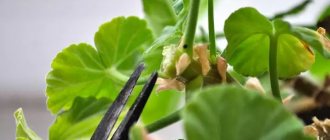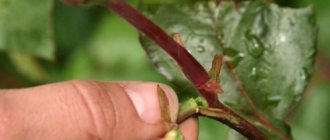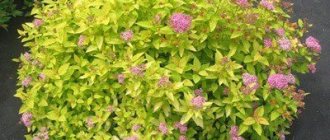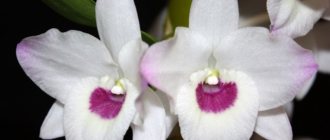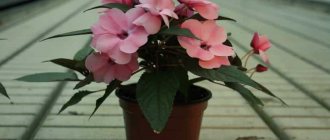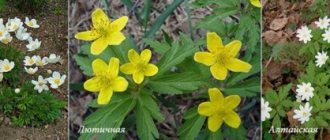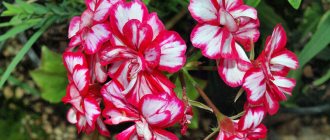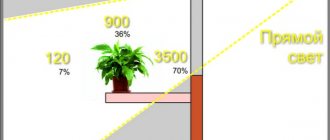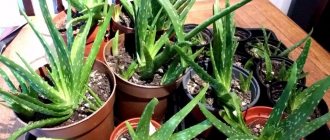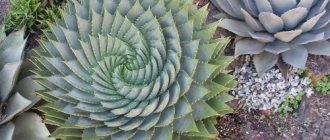General rules for cuttings
You can cut geraniums from February to September, but do not forget that survival rate and flowering depend on the chosen time. In March and September it is 80-90%. This is due to the fact that during these months the plant begins a period of growth and dormancy.
If the gardener wants to see flowers this year, then it is worth rooting it in March. Since a cutting planted a month later will bloom only the next year.
| Reproduction process | February | March | April-July | September |
| Efficiency | average | high | above average | high |
| Bloom | in summer | in July | next year | next year |
| Careful care | needed | not needed | not needed | needed |
| Survival rate | low | high | average | high |
When can you take pelargonium cuttings?
This is one of those houseplants that can be taken from cuttings almost anytime. In winter, and even in autumn, the percentage of rooting of cuttings in pelargoniums is lower, but some of the shoots take root even in the depths of winter, and success can be achieved. True, the whole process will take twice as long, and the bushes can stretch out before the arrival of spring without additional lighting. That is why, whenever there is a choice, it is better to use the classic period - spring, the beginning of active plant growth. Then, without any hassle, you will be able to get lush bushes by summer, ready for vigorous flowering.
For cuttings, use healthy, mature, strong bushes. Usually these are pelargoniums, which are already planned to be formed and trimmed after winter.
Preparatory work
Cuttings are taken from an adult plant that has grown greatly and needs pruning. This procedure not only makes it possible to propagate planting material, but also to rejuvenate the crop. Since after a “haircut” a large number of young shoots appear, on which flowers form over time.
Cuttings for planting should be of the following height:
- 8-10 cm for tall varieties;
- 2-5 cm for short people.
For propagation, shoots with 3-4 apical leaves directed at right angles to the main trunk are cut. Cutting is carried out with a sharp, disinfected knife or scalpel.
The cuttings are removed in the shade until the cut dries. The degree of readiness for planting can be determined by the appearance of a thin film. The cut area is treated with charcoal or brilliant green.
If a cutting with inflorescences or buds is chosen for cutting, they must be removed before rooting, otherwise the formation of roots may be delayed.
Plastic or peat pots with a volume of 200 ml are suitable for planting. A drainage hole is made at the bottom to allow water to drain out.
The planting substrate must be well-drained and nutritious. You can buy it at the store or prepare it yourself. The soil for geraniums should consist of peat, sand and perlite in a ratio of 1:1:1. For better rooting and disinfection, it is spilled with boiling water or a weak solution of potassium permanganate.
New rise in popularity
Pelargonium fragrant
It has been familiar to us since childhood - geranium decorated the window sills in our grandmothers' houses and for some reason was considered a symbol of bourgeois comfort. In fact, pelargonium has a huge variety of species, varieties, and colors. And they grow it not only in pots on window sills, but also on the balcony, in the garden or in greenhouses. Pelargonium is not only beautiful - it has unique medicinal properties. Having appreciated them, flower growers gave the flower a new life.
The second reason for the popularity of the flower is the ability to grow it not only from cuttings, but also from seeds. There are more opportunities for flower breeding.
Rooting in the ground
A layer of drainage is placed in the prepared cups. It can be expanded clay, pebbles or foam. Cover with disinfected soil and install the cutting to a depth of 4 cm. The soil is compacted and shed generously. The cups are placed in the shade for several days for quick adaptation.
To ensure that root formation occurs quickly and efficiently, each cutting is sprinkled with Kornevin or Epin before planting.
After 3-4 days, the seedlings are transferred to a south-facing window, shaded from direct sunlight. For better rooting, the temperature in the room should be no higher than +16 degrees and no lower than +14. Watering is carried out only through a tray to avoid moisture getting on the leaves and the appearance of a black leg.
If the cutting develops well, then there is no need to cover it with film. But when limp and yellowed foliage appears, a microclimate is created for the plant by covering it with a jar or cellophane. After a short time, the flower will recover and begin to form.
Rooting time depends on the variety. On average, from the moment of planting until the roots appear, it takes 4-6 weeks. In transparent cups, the roots are clearly visible through the walls. And in peat containers, the formation of roots can be determined by the intensive growth of young foliage.
Rooting in water - step-by-step instructions
This is a simple and quick rooting method that even an inexperienced gardener can handle.
| Photo | Step-by-step instruction |
| We soak the prepared cuttings for several minutes in a growth stimulator. | |
| While the plant is being processed, prepare a jar or plastic cup. In a container with settled water, you need to dilute crushed activated carbon. It is necessary to prevent root rot and microbial development | |
| We lower the cuttings into water to ½ length | |
| We put the cups in a bright, shaded place from the sun. To prevent the water from blooming, we change it every 2-3 days, not forgetting to add coal | |
| After the roots appear, the cuttings need to be planted in a prepared substrate. |
In order for the plant to bloom beautifully, cuttings are planted in groups at a distance of 15-17 cm.
Propagation of geranium at home, video:
Landing
How to propagate geraniums from cuttings? At the initial stage of such cultivation, care should be taken to root the cuttings in separate small containers. The bottom of such containers needs to be holed in several places, brick or other drainage should be placed in the container, as well as loose, non-acidic soil. As soil, it is permissible to mix turf, soil from the garden, humus and sand. A universal soil mixture purchased at specialized sales points is also suitable.
How to plant geranium? Before planting, it is recommended to thoroughly soak the soil with boiling water or a concentrated solution of potassium permanganate. Sometimes coconut or sphagnum is used instead of soil.
Prepared cuttings should be planted in well-moistened soil to a depth of at least 2 centimeters. Planting of plant materials can be carried out both in individual containers and in a common one. Growing in one container can lead to tangled roots, making it difficult to plant young plants. The planted plant must be watered very carefully so as not to wet the leaves. Otherwise, the culture may rot.
Care after rooting
After rooting, the young plant is transplanted to a permanent place. To do this, take a small pot, since in a spacious container it will intensively grow the root system to the detriment of flowering. Drainage is placed at the bottom, covered with nutritious, well-drained soil and a seedling is installed. The soil around is carefully compacted and spilled.
After planting, the crown is pinched to give the crop the shape of a bush. The pot is placed in a well-lit place, protected from direct sunlight and drafts. Watering should be moderate, after the top layer of soil has dried. Pelargonium does not tolerate spraying well, so it is better to moisten it through a tray.
Fertilizing is applied during the formation of buds. For this purpose, phosphorus-potassium fertilizers are used. For lush and long-lasting flowering, remove faded inflorescences in a timely manner.
Read about an interesting type of flower - Ficus Natasha.
Common Mistakes
Usually, beginners complain about the lack of flowering and the death of the plant. Although it is unpretentious in care, it still requires some attention. Common errors are presented in the table.
| Actions | Flaw | Surplus |
| Watering | Drying out of the earthen coma leads to the death of the flower | Root collar rotting |
| Fertilizers | Poor development, lack of flowering | Brittle and elongated stems, abundant flowering leads to rapid depletion of the plant, which leads to death |
| Trimming | Loss of decorative appearance | Lack of flower stalks |
Types of geraniums with a brief description
There are a large number of varieties of pelargonium. They vary in color, shape of leaves and flowers. Among the variety, four species are especially popular.
| Species name | Short description |
| The species is easy to care for and blooms profusely with bright inflorescences of various colors. Some varieties are darkened in the center. The leaf blade is rounded, with slight wavy edges. The number of petals depends on the variety: simple has 5 petals, semi-double has 6-8, double has 10 or more. With good care, blooms all year round. But it depends on the volume of the pot: the smaller it is, the more flower stalks the plant will produce |
| Large-flowered species. The diameter of the flowers can reach up to 15 cm. They can be of various colors. But there is one peculiarity - each petal is decorated with a dark stripe. The plant grows up to half a meter and blooms for 4 months. Flowering occurs in the second year, the variety is very demanding in care |
| Very fragrant look. When the leaf is damaged, the room is filled with a lemon, strawberry or ginger smell. The inflorescences are small, pink or purple. This species is used in cooking, cosmetology, medicine and for oil production. |
| The species reaches a meter in height and has thin and fragile shoots. Dark olive star-shaped foliage. Double or simple flowers of a wide variety of colors. Flowering occurs in summer, the flowers are small, 5 cm in diameter, last up to 4 months. The plant looks beautiful in hanging pots |
Geranium is a special and fragrant plant that even a novice gardener can grow. Knowing how to properly root a crop, you can supplement your flower collection with a wide variety of species and varieties. The flower is undemanding in care, but if you surround it with care and love, it will reward you with abundant, friendly and long-lasting flowering.
An interesting beautiful plant is the prominent sedum. Read about it at the link.
What cuttings and how to cut them?
Pelargonium propagates very easily, but only by one type of cuttings. In order to get healthy, strong bushes, plants cannot use stem or leaf cuttings. Only the tops of shoots are suitable for propagation of pelargoniums, and even then with a sufficient number of “growth points” - 2 - 4 leaves. Depending on the variety, the length of the cutting can be either the standard 5-8 cm or reach 10-12 cm. It is better to focus on the number of leaves and internodes, and not on the size.
To avoid problems, you need to use only a sharp tool - not scissors or pruning shears, but a blade, a scalpel, a stationery knife with a very sharp blade that allows you to make a clean, even cut. It is better to disinfect the surface of the tool and repeat disinfection before cutting each subsequent shoot.
It's easy to cut a cutting correctly:
- Holding the tip of the shoot and counting the required number of leaves, go down 1-1.5 cm below the node.
- Make a straight cut at an angle of 45 degrees. If you are afraid of mistakes, make a “stock” and update the cuts on the already cut cuttings, laying it on a flat surface.
After examining the cutting, be sure to remove the lower leaves (you should leave only the top pair) and all inflorescences, even in the initial stages of development.
Rooting can be “helped” using stimulants, but such treatment is not at all necessary for pelargonium

